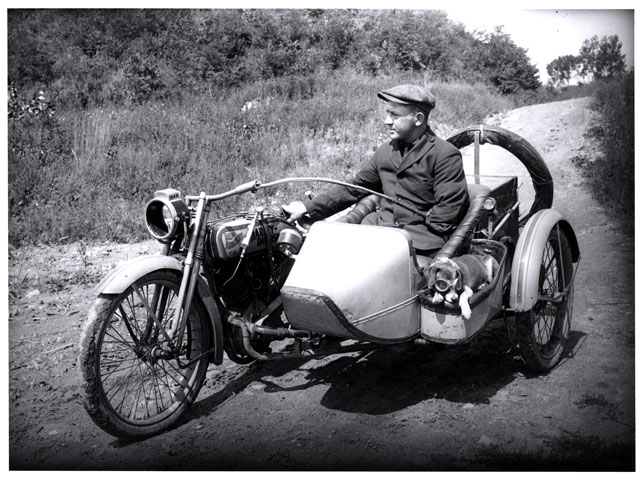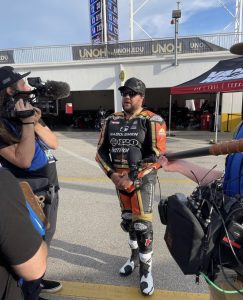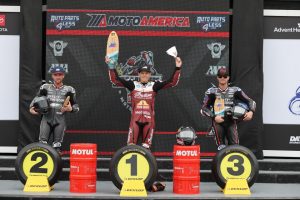by Maria Schoeberl, Harley-Davidson Senior Archivist
Harley-Davidson motorcycle riders have always been well suited to the name “Enthusiast.” And there have always been riders who have taken this title to proud lengths. Perhaps the best examples of this are the riders who have overcome physical disability to pursue their love of motorcycling.

One of the earliest photographs in the Archives features one such rider. The circa 1919 image shows long-distance rider Alfred LeRoy in his specially modified motorcycle and sidecar. LeRoy, who lost his left arm and at least one leg in an unidentified incident, modified the hand and foot controls so that they could all be operated with his right hand. He then had the left handlebar extended so that he could operate the motorcycle while sitting in the sidecar, which was attached to the left side of the vehicle. As a finishing touch, LeRoy had a small leather-upholstered sidecar attached to the left of his own for his dog.
LeRoy’s sidecar modification was not unique. Rider Richard E. New had lost his legs, broken his back in two places and lost the sight in one eye as a result of falling 1,800 feet after his parachute failed to open. But in 1921, New took his sidecar-operated Harley-Davidson motorcycle on a 14,960-mile trip through 11 states, also, coincidentally, with his dog as companion.
Other riders with disabilities have been able to ride the motorcycle itself with only minor modifications. Robert Brown had lost his arms below the elbow and legs below the knee in a construction accident. The day he was released from the hospital, Brown went straight to the motor vehicle department and passed all the required tests to receive his motorcycle license. Brown purchased a 1960 Duo-Glide motorcycle with sidecar and with the help of his friends had it modified to make riding easier for him. The motorcycle was converted to a foot clutch and hand shift from an older model, and small rings were added to the throttle grip and spark advance grip so that Brown could more easily tell their position. The modifications worked well; by 1972 Brown was going on tours and poker runs and belonged to a motorcycle club.
Today, riders with disabilities do as much as they ever did to enjoy the sport of motorcycling. Steve Thompson, who suffers from the neuromuscular disease ALS (a.k.a. Lou Gehrig’s Disease,) has designed and had built a special sidecar with a ramp for his wheelchair. He simply rolls it up, locks it in and climbs onto the seat to ride. This has allowed Thompson to continue riding and touring as much as he ever has … a tribute to ALL Harley-Davidson motorcycle riders.



